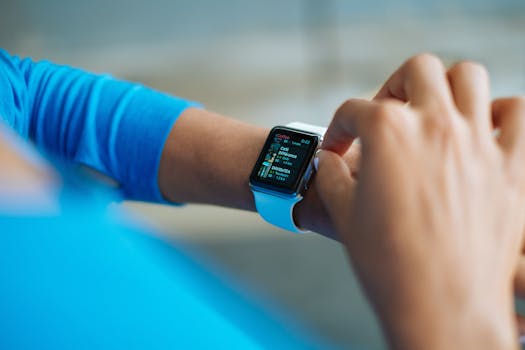The Future of Health Tech: Wearables and Gadgets in 2025 – Health Tech
The future of health tech is an exciting and rapidly evolving field, with new innovations and discoveries being made every day. Health Tech wearables and gadgets are playing a major role in this development, allowing individuals to take control of their health and wellbeing like never before. In this article, we will explore the latest trends and innovations in health tech, including wearables and gadgets, and how they will shape the future of healthcare in 2025.
Introduction to Health Tech Wearables

Health tech wearables are devices that can be worn on the body to track and monitor various aspects of health and fitness. These devices have become increasingly popular in recent years, with many people using them to track their daily activity levels, sleep patterns, and nutrition. Some of the most common types of health tech wearables include smartwatches, fitness trackers, and smart glasses.
These devices are equipped with a range of sensors and technologies, including GPS, accelerometers, and heart rate monitors, which allow them to track a wide range of health and fitness metrics. Many health tech wearables also include features such as notification systems, music control, and mobile payment capabilities, making them a convenient and versatile accessory for daily life.
Advances in Health Tech Gadgets

In addition to wearables, there are many other types of health tech gadgets that are revolutionizing the way we approach healthcare. Some of the most exciting advances in this field include the development of portable diagnostic devices, such as blood glucose monitors and portable ECG machines.
These devices are allowing individuals to take control of their health and wellbeing, by providing them with accurate and reliable diagnostic information. They are also enabling healthcare professionals to make more informed decisions, by providing them with real-time data and insights.
Another area of innovation in health tech gadgets is the development of telemedicine platforms. These platforms are enabling patients to remotely consult with healthcare professionals, using video conferencing and other digital technologies.
This is particularly useful for individuals who live in remote or underserved areas, where access to healthcare services may be limited. Telemedicine platforms are also helping to reduce the burden on healthcare systems, by reducing the need for hospital visits and other in-person consultations.
Future of Health Tech: Trends and Innovations

So what does the future hold for health tech? There are many exciting trends and innovations on the horizon, including the development of artificial intelligence (AI) and machine learning (ML) technologies.
These technologies are being used to analyze large datasets and identify patterns and trends, which can help to improve healthcare outcomes and reduce costs. For example, AI-powered chatbots are being used to provide patients with personalized health advice and support, while ML algorithms are being used to analyze medical images and diagnose diseases more accurately.
Another area of innovation is the development of virtual and augmented reality (VR/AR) technologies. These technologies are being used to create immersive and interactive healthcare experiences, such as virtual reality therapy sessions and augmented reality fitness classes.
They are also being used to enhance medical training and education, by providing healthcare professionals with realistic and engaging simulations of real-world scenarios.
Conclusion

In conclusion, the future of health tech is an exciting and rapidly evolving field, with many innovations and discoveries being made every day. Health Tech wearables and gadgets are playing a major role in this development, allowing individuals to take control of their health and wellbeing like never before.
As we look to the future, it is clear that health tech will continue to play a major role in shaping the healthcare landscape. With the development of new technologies and innovations, we can expect to see even more exciting advances in the years to come.






